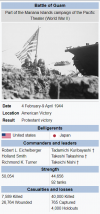The Pentagon: April 20th 1943
The office those assembled now sat in still reeked of fresh paint and varnish. The Pentagon had been offically completed months ago, and this office was one of the few that was suitable for those who were attending. General Marshall sat at the head of the table, joined by Generals LeMay and Arnold, who together formed the closest thing to the USAAF's commanders. Also joining them were the two leading engineers at Boeing in charge of the project the were here to discuss, and a few other assorted army officers who were here for various reasons.
Marshall opened the meeting "From my understanding, the B-29 has passed all the necessary trials needed for entering service and production.". "Yes General" The lead engineer spoke up "In fact production has already begun, and we have 250 service ready aircraft as of today, and a monthly production of 100 and rising steadily.". Marshall pondered that, That was enough for combat service to begin today, in theory at least. One of the other officers spoke up "We've already begun cross-training crews who have seen action in europe, We should have enough crew to keep up with production, with some to spare." Marshall nodded aprovingly. "Now the more important business, what are we going to do with these machines?" LeMay spoke up "General Stilwell is already overseeing the construction of facilities in China, they should be prepared for the aircraft by a month from today." Marshall nodded again. "I'd prefer to command whatever bombardment group gets sent to china" Arnold said "Out there, we'll need top down pressure to make sure the nationalists are keeping these things out of Jap hands." "Agreed" said Marshall "General Arnold, you are hereby ordered to take command of twentieth air force, You'll be expected to ship out this week" "Thank you sir" Arnold said as both men exchanged salutes.
Marshall Continued "Are any other concerns anyone thinks need to be adressed today?". LeMay stood up "Sir I think we should discuss who and what will be protecting these bombers.The Jap army air forces in china are still potent enough to pose a threat, and on the ground the superfortress is as vulnurable as any other aircraft. We can't rely soley on the Chinese to protect us in the air, as they will on the ground." Marshall waved him off "That reminds me, Arnold, you'll also be given a wing of about 80 P-40s, they're old, but they're the best we can spare at the moment, and they can operate from existing airfields. If there's nothing else, this meeting is over." After a round of saluting and plesentries, the men filed out, with one unifed thought that they all shared in some way or another "It's payback time you son's of bitches".
Last edited:
